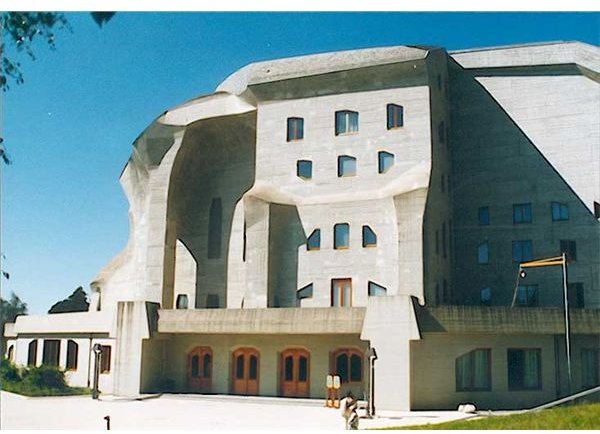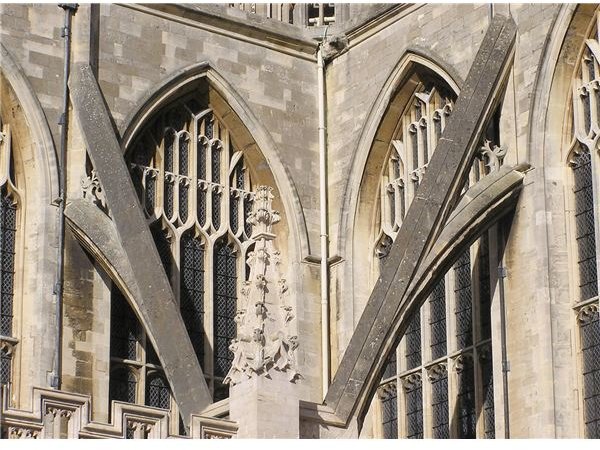Structural Use And History Of The Flying Buttress
Arc-Boutant Is Not Served With A Latte
A simple buttress is a form of external support for walls, typically an external column placed in contact with the wall throughout its entire height. Placing the column some distance away from the wall, and using a half-arch to connect the top of the column with the wall/ceiling intersection, gives a structurally graceful yet lightweight support to the wall. To the casual observer the column and arch combination appears to soar or “fly” up to the wall, presumably giving the flying buttress its name. The French term arc-boutant is probably a more accurate description, roughly meaning to “thrust through the arch.“ Several such structures could be placed in series with one another, multiplying the soaring effect while enabling even taller structures and larger open spaces.
The exact origin of the flying buttress is less than clear. The desire to safely and dramatically enclose large interior spaces has been a goal of architectural design for many centuries, typically for religious purposes. Mayan temples incorporated stone vaults in the form of an inverted V, with horizontally placed wooden collar ties across the interior space for support. Early Roman and later Byzantine engineers utilized buttresses in their stonework but masked or hid the supports from view. It wasn’t until the era of Gothic architecture that these structural elements became desirable decorative features in cathedrals and churches of the time. Not only did they lend a dramatic, spiritual effect to a structure, but they also enabled architects to incorporate windows, doors, and other openings into an otherwise heavy, load bearing wall.
Tall Ceilings And Stained Glass
It is the load transferring capability of the flying buttress that made it so successful in Gothic Europe. Stonework created solid, safe, and long lasting structures when properly executed. But it was also very massive and costly to construct. Stonework is so heavy that the simple masonry building techniques of the period could not create tall, thin walls without fear of the structure tilting, leaning, or otherwise collapsing on the inhabitants. Attempting to incorporate a ceiling across a large span put additional compressive and lateral stresses near the top of an already unstable structure. Creating window and door openings presented further structural challenges, as headers were limited in size again by the weight of the stone materials. By utilizing the principle of “thrust through the arch”, the stability of tall, load bearing stone walls was greatly increased without requiring incorporation of massive individual stones into the wall. The required mass could now be placed into the external pillar support of the buttress, away from the interior vaults. Less load bearing on the wall also allowed placement of more windows and doors without compromising structural integrity. Some examples of Gothic structures utilize 70% or more of the available wall space for doors and stained glass windows, an astonishing figure for stonework at the time.
Replaced But Not Forgotten

The development of other structural materials such as iron, steel, and concrete dictated the decline in popularity of the flying buttress. Entire walls can now be made of glass without the need for external supports, and skyscrapers have become all but common. However, even though the structural need for these visual supports has all but vanished, the architectural soaring appeal can still be found in select modern structural design such as facades and retaining walls.
